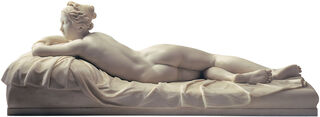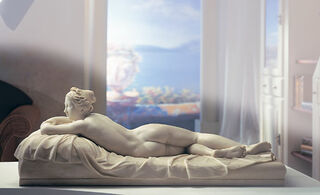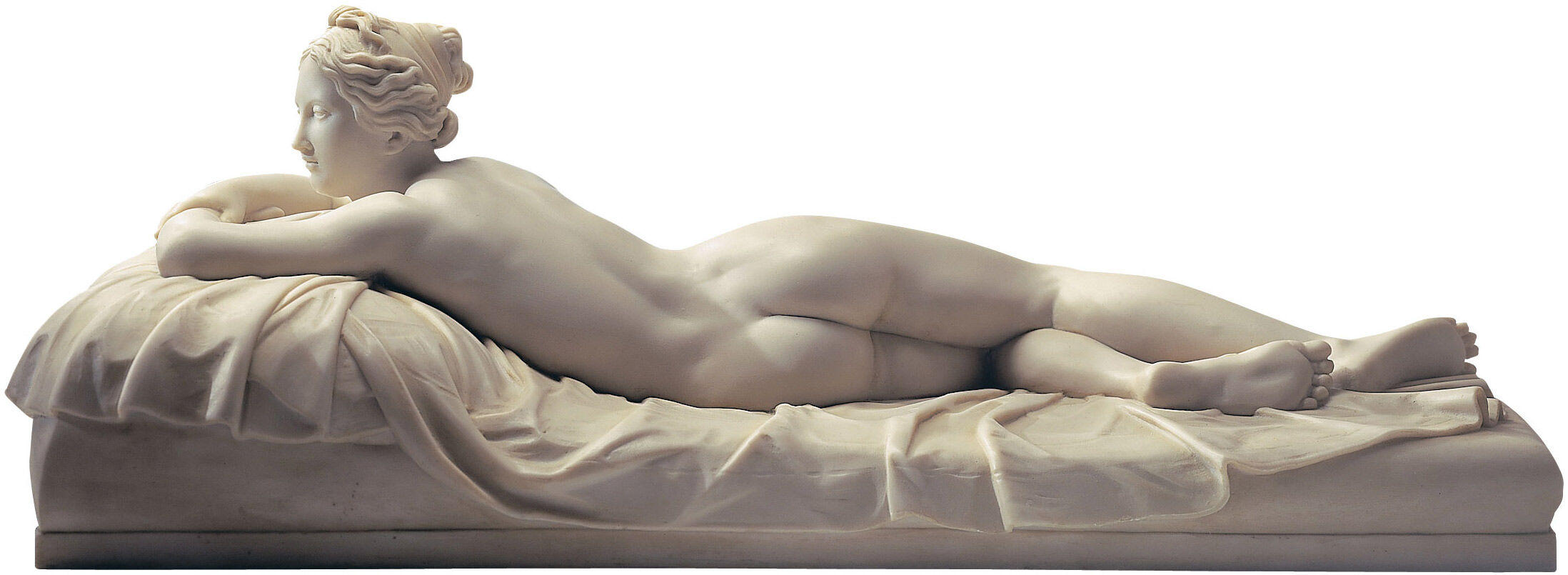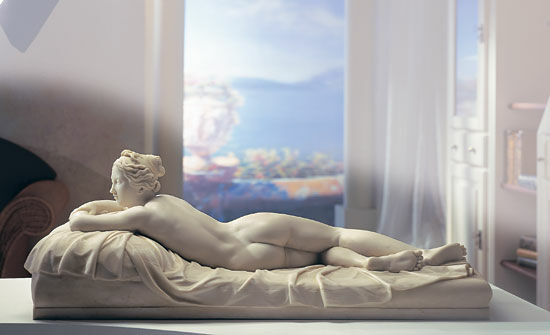Sculpture "The Resting Girl" (1826), artificial marble
Sculpture "The Resting Girl" (1826), artificial marble
Quick info
museum replica | artificial marble | size 95 x 37 x 38 cm | weight 75 kg
Detailed description
Sculpture "The Resting Girl" (1826), artificial marble
The Quadriga on the Brandenburg Gate is Schadow's best-known work. But with the sculpture of the resting girl, the main representative of German classicism brought his oeuvre to a crowning conclusion: it is the glorious summary of his life's work, in which his artistic principles are perfectly united.
Original: National Gallery, Berlin. Marble.
Polymer ars mundi museum replica, cast by hand. Size 95 x 37 x 38 cm, weight 75 kg.
Customer reviews
Sehr schönes Objekt. Abwicklung und Lieferung waren nahezu perfekt. Einzig die in den Augen-, Zehen- und sonstigen kleinen Zwischenräumen verbliebenen weißen Rückstände (wohl aus dem Produktionsprozess) hätten vor Lieferung entfernt werden müssen. Ich bin sehr zufrieden und erfreue mich jeden Tag aufs Neue daran.
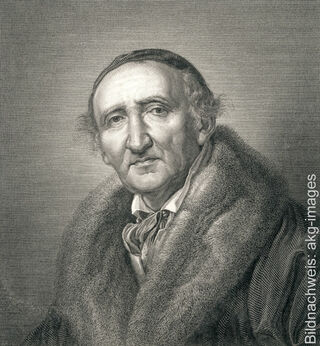
About Johann Gottfried Schadow
1764-1850
Johann Gottfried Schadow was the most important German sculptor of the Napoleonic era. He trained at the royal school of sculpture and later became head of the court sculpture workshop and "director of all sculptures" in 1788. Schadow's classical ideal was increasingly joined by realistic, national and individual features. His classically ideal and realistic style set the trend for the 19th century.
His art combines a natural sensuality and grace leading out of the Rococo with great realism. His double statue of the crown princesses Luise and Friederike of Prussia in marble is the first life-size double statue of classicism and set standards for 19th-century monument sculpture. He created the famous quadriga on the Brandenburg Gate in copper rubbing, as the bronze casting technique could not yet be used for such large objects. During the Restoration period, Schadow's realistic classicism found fewer patrons and was supplanted around 1820 by the official and emphatically representative art of his pupil Caspar Daniel Rauch.
Until his death, Schadow was director of the Berlin Academy and exerted great influence, also through his writings.
The term refers to the art movements of ancient, mostly Greek models.
According to the current understanding, classicism is the period between 1750 and 1840 when the late Baroque was gradually replaced by classically orientated art. The great explorations of Greek art and architecture at that time awakened a true enthusiasm for antique models. The Glyptothek in Munich, the Panthéon in Paris, The New Guard House (Neue Wache) and the Brandenburg Gate in Berlin are just a few examples of the revived classical style.
The leaders of the statuary art were Antonio Canova, Bertel Thorvaldsen and in Germany Johann Gottfried Schadow and Christian Daniel Rauch.
In painting, the outstanding representatives of this style are Jaques-Louis David or Jean-Auguste-Dominique Ingres.
Marble powder is polymer-bonded. Artificial marble is characterised by a fine white surface that appears very similar to marble.
A true-to-the-original reproduction of an artwork in the same size and with the best possible material and colour uniformity.
The mould is usually taken directly from the original so that the replication reproduces even the finest details. After casting the replication, using the most appropriate method, the surface is polished, patinated, gilded or painted according to the original.
A replication of ars mundi is a recognizable copy of the original.
A plastic work of sculptural art made of wood, stone, ivory, bronze or other metals.
While sculptures from wood, ivory or stone are made directly from the block of material, in bronze casting a working model is prepared at first. Usually, it is made of clay or other easily mouldable materials.
The prime time of sculpture after the Greek and Roman antiquity was the Renaissance. Impressionism gave a new impulse to the sculptural arts. Contemporary artists such as Jorg Immendorf, Andora, and Markus Lupertz also enriched sculptures with outstanding works.

